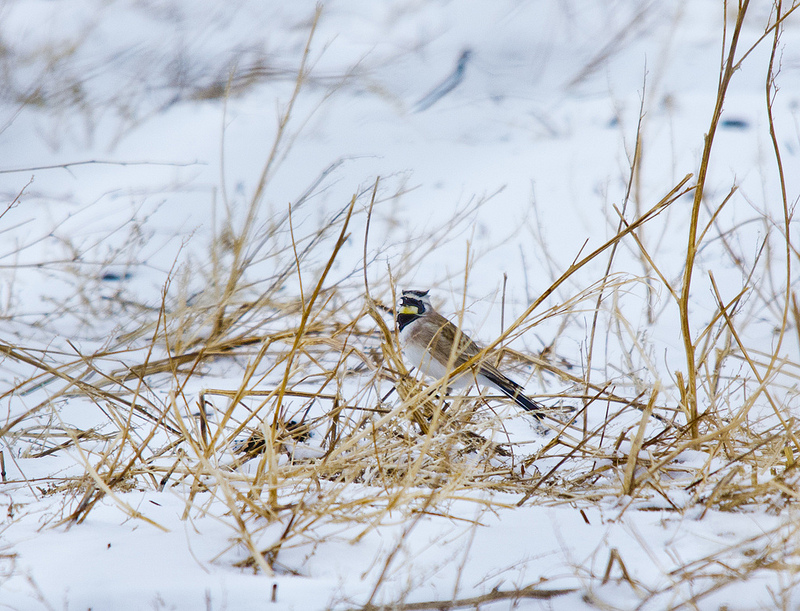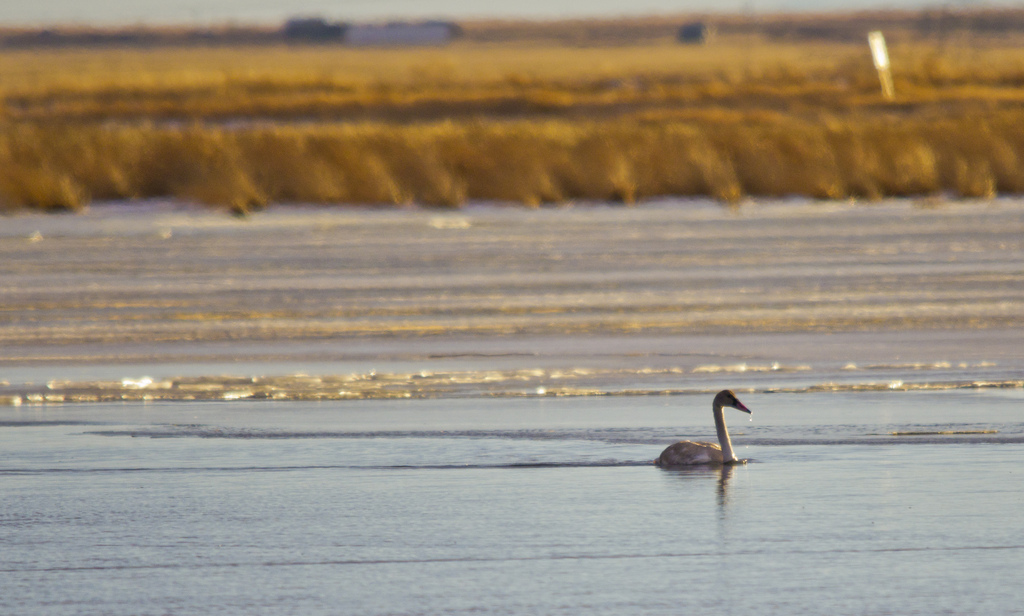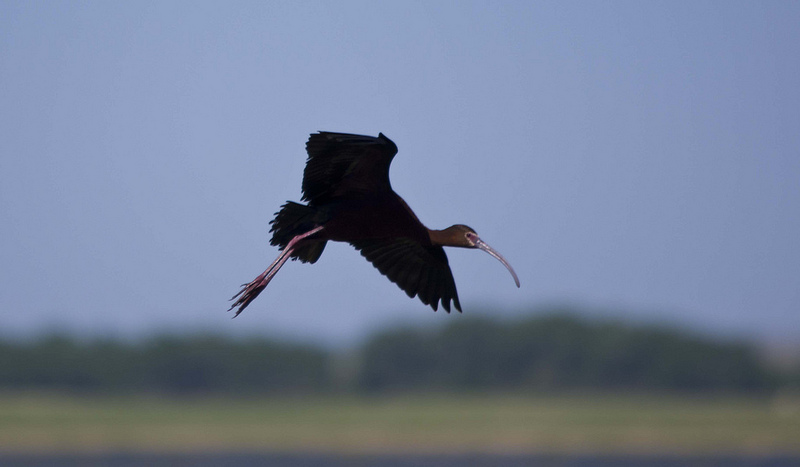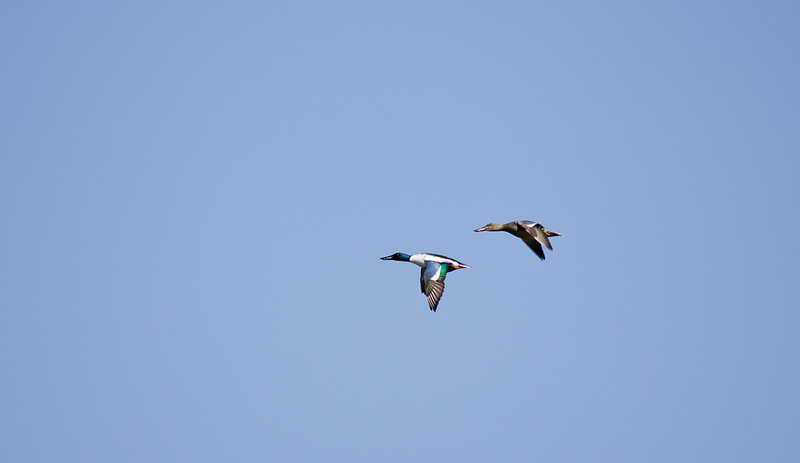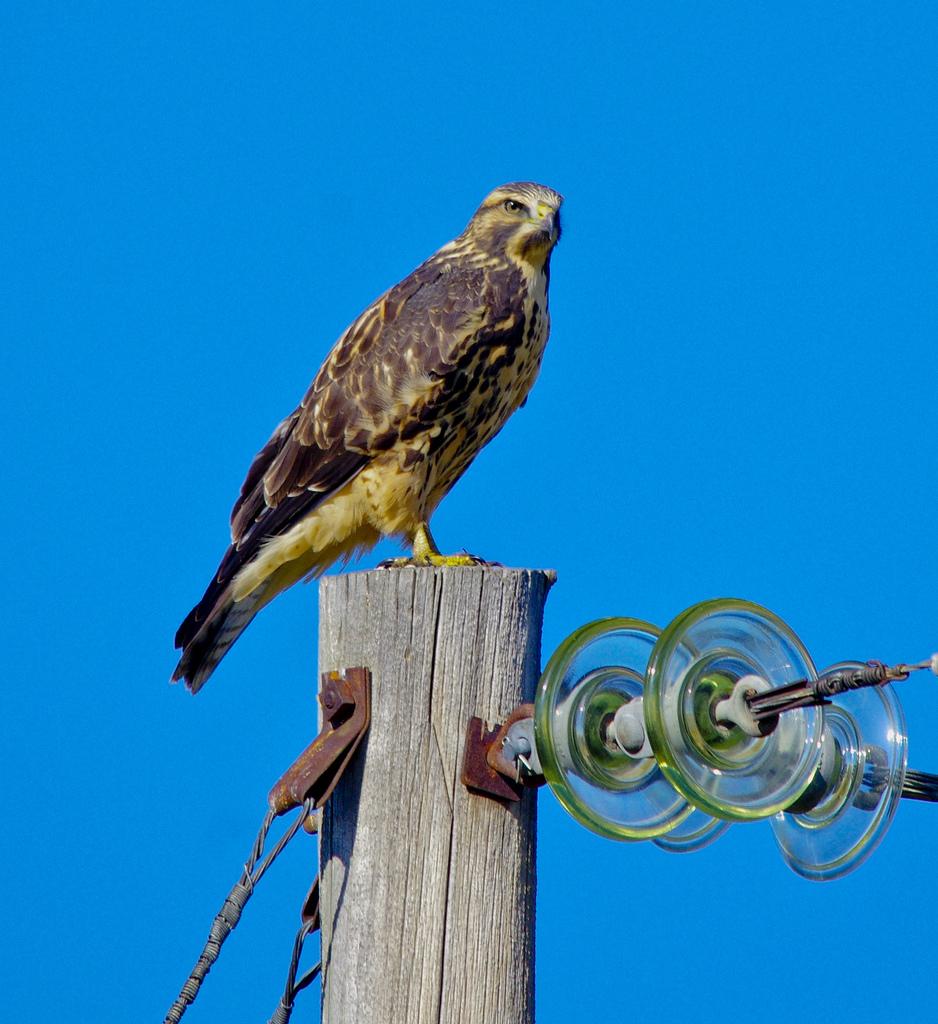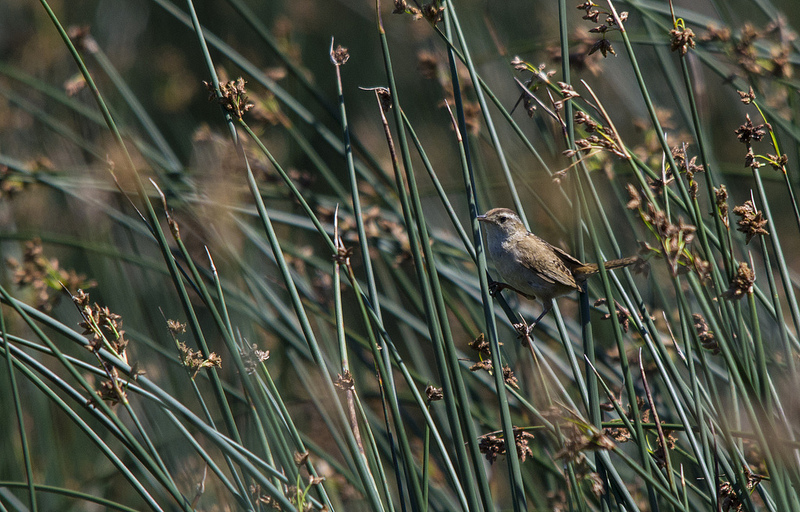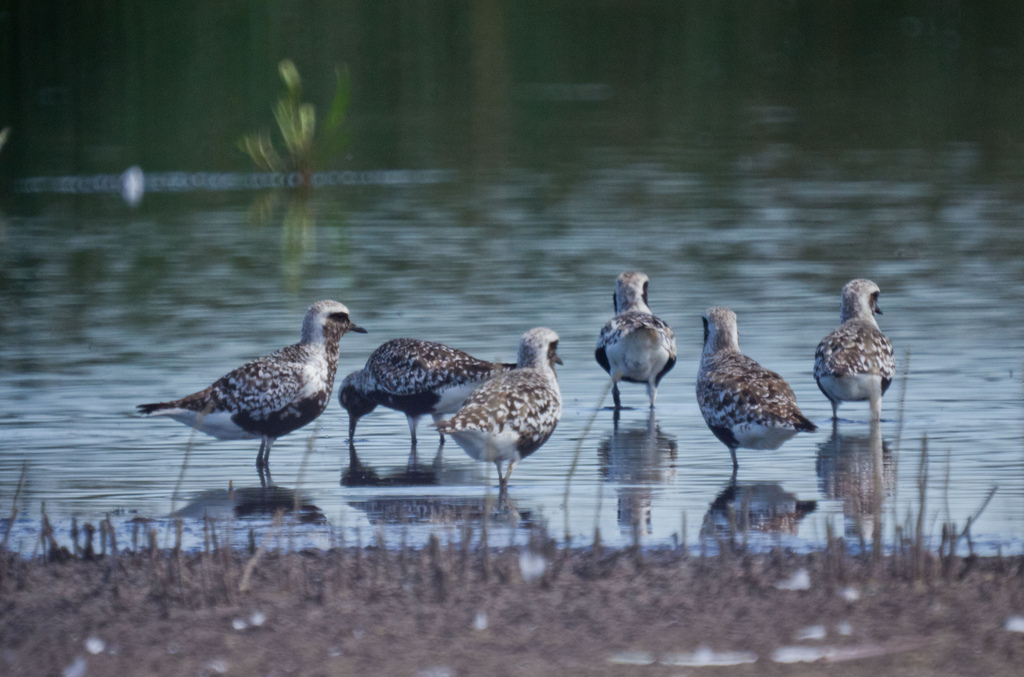Rob English photographed this beautiful bird that his wife spotted on Grand Valley Road in mid-July.
Rare Bird Alert Calgary: Aug 16
Have you seen an unusual bird in Calgary?
If it is on this Reportable_Birds (PDF), please report it to the Nature Calgary Rare Bird Alert line at 403 221-4519 and leave a message after the beep at the end of the recording. If you would like some help with species identification, email us at birdscalgary@gmail.com. To report injured wildlife call the Calgary Wildlife Rehabilitation Society at 403 239-2488, or the Alberta Institute for Wildlife Conservation at 403 946-2361.
Compiled by Terry Korolyk
Aug 13:
PURPLE FINCH, OLIVE-SIDED FLYCATCHER (3), ROSE-BREASTED GROSBEAK , HERRING GULL at Inglewood BS, Bill Wilson.
OLIVE-SIDED FLYCATCHER by bridge 5 , Marshall Springs, FCPP, Al Borgardt.
Aug 14:
WILSON’S WARBLER (8), AMERICAN REDSTART, NORTHERN WATERTHRUSH, SOLITARY SANDPIPER (2), Confederation Park, BW.
WESTERN SANDPIPER, slough at 304 St SE, 2km S of Hwy 552, and 19 species of SHOREBIRDS, slough at Hwy 560 W of Hwy 24, Richard Clarke.
Aug 15:
AMERICAN REDSTART (7), ROSE-BREASTED GROSBEAK, WILSON’S WARBLER, OLIVE-SIDED FLYCATCHER, Willow Pk, Matthew Sim.
TENNESSEE WARBLER (6), NORTHERN WATERTHRUSH at Hull’s Wood, FCPP, MS.
CANADA WARBLER, S end IBS, Pat Mitchell.
The next scheduled update of the Bird Alert is on Monday Aug 20.
Rare Bird Alert Calgary: Aug 13
Have you seen an unusual bird in Calgary?
If it is on this Reportable_Birds (PDF), please report it to the Nature Calgary Rare Bird Alert line at 403 221-4519 and leave a message after the beep at the end of the recording. If you would like some help with species identification, email us at birdscalgary@gmail.com. To report injured wildlife call the Calgary Wildlife Rehabilitation Society at 403 239-2488, or the Alberta Institute for Wildlife Conservation at 403 946-2361.
Compiled by Terry Korolyk
AUG 12
WHITE-RUMPED SANDPIPER – at slough on Hwy 560 just west of Hwy 24 , Terry Korolyk
WESTERN SANDPIPER – 2 at large slough on 304 St. SE 2 kms south of Hwy 552
SANDERLING – At Weed Lake on Hwy 560 at Landon, TK
ORANGE-CROWNED WARBLER – Inglewood Bird Sanctuary, Steve Kassai
CONNECTICUT WARBLER – as above
TENNESSEE WARBLER – 4 as above
NORTHERN WATERTHRUSH – 3 by west bridge in Confederation Park reported by Dan Arndt
LINCOLN’S SPARROWS – 4, as above
LOGGERHEAD SHRIKE – 4 northeast of Chestermere Lake on Inverlake Road between RR 274 and Hwy 9, DA
The next scheduled update of the bird alert is on Mon Aug 16.
Sunday Showcase: Great Gray Owls
Rare Bird Alert Calgary: Aug 9
Have you seen an unusual bird in Calgary?
If it is on this Reportable_Birds (PDF), please report it to the Nature Calgary Rare Bird Alert line at 403 221-4519 and leave a message after the beep at the end of the recording. If you would like some help with species identification, email us at birdscalgary@gmail.com. To report injured wildlife call the Calgary Wildlife Rehabilitation Society at 403 239-2488, or the Alberta Institute for Wildlife Conservation at 403 946-2361.
Compiled by Terry Korolyk
AUG 4
TRUMPETER SWAN – adult on large marsh on east side of Hwy 22, 1 km south of the Plummer’s Road Junction, Terry Korolyk observed its presence all summer
RED PHALAROPE – 4 juveniles seen by Tony Timmons, Al Borgardt and Howard Heffler on a slough near the Brant Hutterite Colony west of Hwy 804;
AUG 5
RED PHALAROPE – 1 juvenile seen by TK 1 km south of Hwy 552 on 304 St East
AUG 8
RED-TAILED HAWK – adult female rufous morph at Votier’s Flats seen by TK , noted there for 3rd consecutive season
The next scheduled update of the bird alert is on Mon Aug 13.
Wednesday Wings: Rufous Hummingbird
Rare Bird Alert Calgary: Aug 6
Have you seen an unusual bird in Calgary?
If it is on this Reportable_Birds (PDF), please report it to the Nature Calgary Rare Bird Alert line at 403 221-4519 and leave a message after the beep at the end of the recording. If you would like some help with species identification, email us at birdscalgary@gmail.com. To report injured wildlife call the Calgary Wildlife Rehabilitation Society at 403 239-2488, or the Alberta Institute for Wildlife Conservation at 403 946-2361.
Compiled by Terry Korolyk
Aug 2:
LOGGERHEAD SHRIKE (2) SW of Linden, Twn Rd 302 on Rnge Rd 260, Corinne Griffin.
Aug 4:
RED PHALAROPE, 4 juveniles in a flock of 400-500 RED-NECKED PHALAROPES, BrantHutterite Colony Slough, W of Hwy 804, Tony Timmons, Al Borgardt, Howard Heffler.
CLARKE’S GREBE, 1 at Basin 1 Frank Lake, and 1 with 2 young at Basin 2, TT, AB, HH.
PEREGRINE FALCON, Basin 2 as above.
PEREGRINE FALCON at the lookout, Brown-Lowery PP, Andrew Hart and CFNS Field Trip.
Aug 5:
RED PHALAROPE, 1 juveniles in a large mixed flock of shorebirds, in a slough on 304 St SE, 2 km S of Hwy 552, Terry Korolyk.
WESTERN SANDPIPER, juvenile, as above.
WESTERN SANDPIPER, SANDERLING, HUDSONIAN GODWIT (5) at Weed Lake, Langdon ,TK.
The next scheduled update of the Bird Alert is on Thursday Aug 9.
Travel Tuesday – The Many Faces of Frank Lake
Posted by Dan Arndt
Frank Lake has been one of my absolute favourite standby birding areas since I started seriously committing myself to the hobby. It’s been a little over a year now, and I must have visited the lake at least twenty times or so, in all seasons. Winter, Spring, Summer, and Autumn, though I’ll admit, I missed out on some great birds down there last fall as I was finishing up my degree, this year will be a very different story!
While shorebirds and waterfowl are the primary draw, sparrows, wrens, falcons, hawks, and even owls are also regularly seen down there.
Frank Lake is located about an hour south of Calgary, and east of High River on Highway 23. 2012 marks the 60th year of activity at Frank Lake by Ducks Unlimited Canada, and is considered one of almost six hundred of Canada’s Important Bird Areas, and you can find a ton of useful information about Frank Lake (and other Ducks Unlimited projects in Alberta) at the Ducks Unlimited website.
The areas most visited by birders are detailed in the map below, with Basin 1 being by far the most popular location, with a blind, driving loop, and water outflow which provides open water even in the coldest winter months.
Winter –
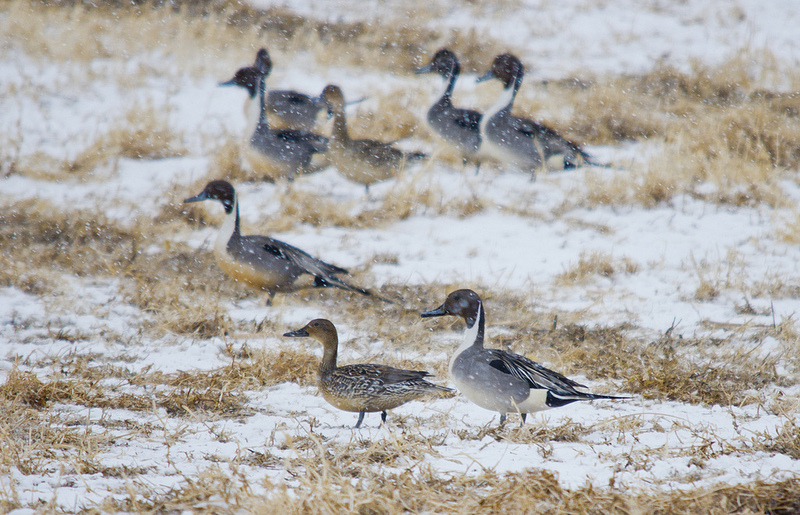
Northern Pintail – March 2012
In late winter/early spring, these Northern Pintail are some of the first migrants back at Frank Lake.
Spring – It’s hard to gauge when winter ends and spring begins out at Frank Lake, as it sometimes seems that the water will thaw completely overnight… but the arrival of some of these favourites is a good indication.

Eared Grebe – May 2012
These beautiful little divers can be found at Frank Lake in the hundreds in early spring.

Red-tailed Hawk – May 2012
A little more white in this one than usual, another of the predators that patrols the lake.
Summer –
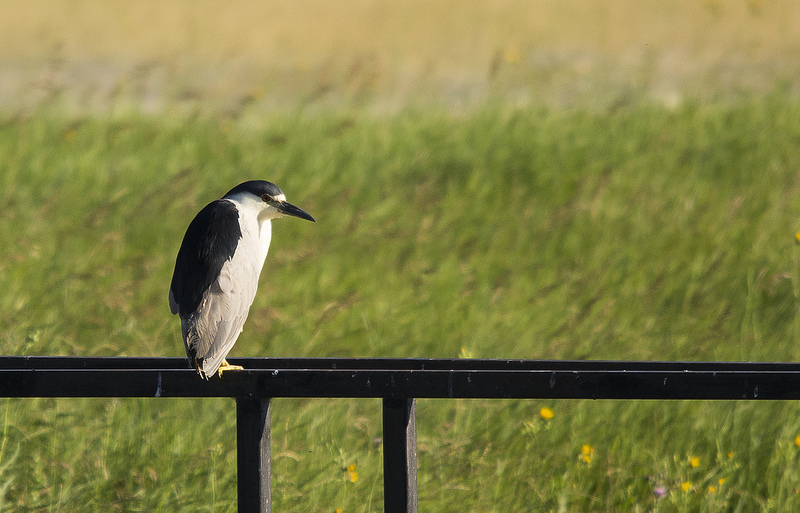
Black-crowned Night Heron – July 2012
Less commonly found at Basin 1, almost every summer trip I’ve taken to Basin 3 has turned up at least Black-crowned Night Heron.
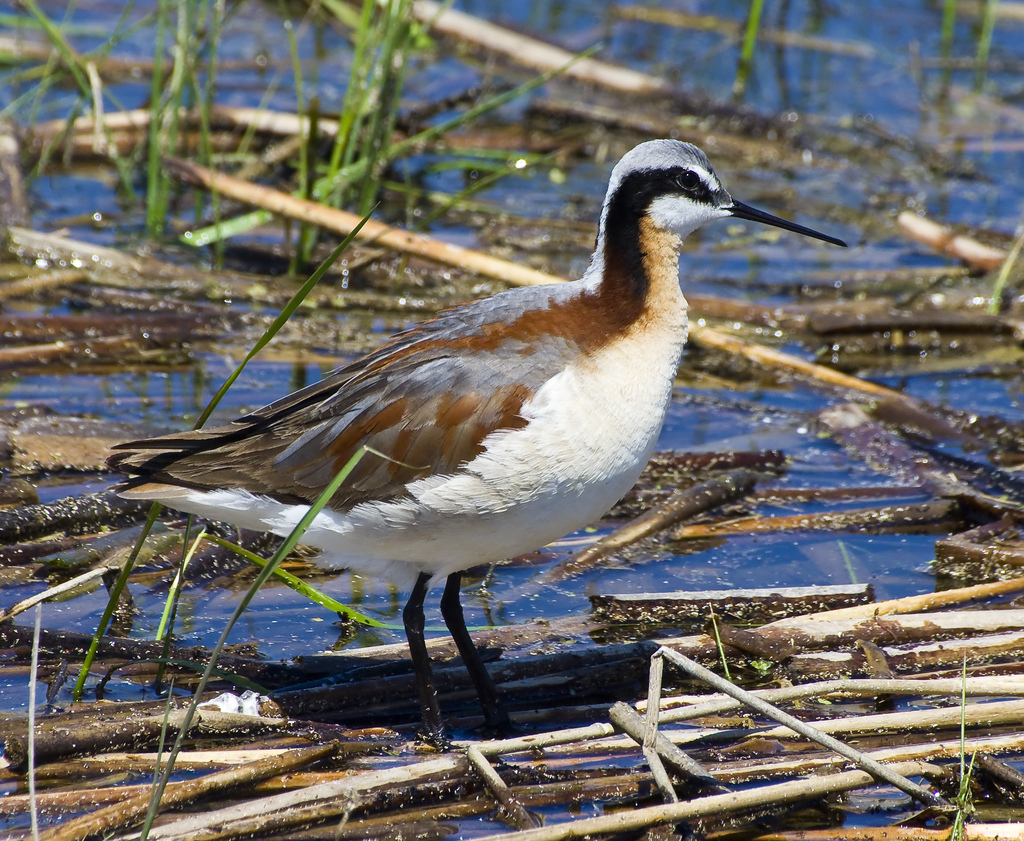
Wilson’s Phalarope – June 2011
A regularly seen species at Frank Lake, they often nest around the shores of the southern basins.

Long-billed Curlew – July 2012
By midsummer, some of the earliest southern migrants begin to make their appearance around the lake.
Autumn –
Rare Bird Alert Calgary: Aug 2
Have you seen an unusual bird in Calgary?
If it is on this Reportable_Birds (PDF), please report it to the Nature Calgary Rare Bird Alert line at 403 221-4519 and leave a message after the beep at the end of the recording. If you would like some help with species identification, email us at birdscalgary@gmail.com. To report injured wildlife call the Calgary Wildlife Rehabilitation Society at 403 239-2488, or the Alberta Institute for Wildlife Conservation at 403 946-2361.
Compiled by Terry Korolyk
JUL 31
BLACK-HEADED GULL – seen at Pakowki Lake by Al and Helga Borgardt at 6:50 am on Hwy 885 where it crosses the NW arm of Pakowki Lake. Originally found at this location on July 20.
RED CROSSBILL – 12 seen by Terry Korolyk flying from Glenfield to Votier’s Flats in Fish Creek PPark
AUG 1
COOPER’S HAWK – seen by Gus Yaki et al on an Elbow River Survey from Stanley Park to Glenmore Reservoir in Calgary; TK also saw an immature flying over Millrise subdivision in Calgary
COMMON LOONS have sucessfully reared 2 young on Lake Bonavista in southeast Calgary this summer – reported by Peter Roxborough
The next scheduled update of the bird alert is on Mon Aug 6.
The Scientific names of Birds
Recently, some birding friends and I were in the mountains listening to the strange song of the Varied Thrush. While its song may not always be described as beautiful, its plumage is definitely gorgeous and we thought its name did not do justice to its beauty. One topic brought us onto the next and soon we were discussing Latin names. While many birders tend to overlook the scientific names of birds, these titles can be quite interesting though I know I certainly had trouble digesting all the taxonomy and etymology! If you enjoy wrapping your heads around this, read on! If you’re like me though, it may seem simply too much!
I was looking in the Federation of Alberta Naturalists ‘Field Guide to Alberta Birds’ (1998) when I noticed that the authors had the etymology (study of the origin of names) of the birds scientific names translated. However, before we get to etymology, let’s look at taxonomy (the classification of species).
All birds are in the Animal Kingdom (Animalia), the Chordata Phylum (with a backbone), and the Class Aves (birds). This is where the similarities stop though and the birds separate into their respective Orders such as Falconiformes (hawks and eagles) and Passeriformes (Passerines). Then, species are divided down into Families for example Parulidae (Wood-Warblers.) After the Families come the subdivisions of Genus and Species. These last two are used in the bird’s scientific name as binomial nomenclature, which describes the species of living organism. For example, a Red-breasted Nuthatch is Sitta canadensis. The word ‘Sitta‘ is the nuthatches genus and ‘canadensis’ is the name that specifically describes the Red-breasted Nuthatch. With the name Sitta canadensis, scientists everywhere know that you are talking about the Red-breasted Nuthatch. This is where the classification of species ends and we can look at the origin of the species’ binomial nomenclature and the etymology of the name.
Etymology, the origin of words can be fascinating. I found that some of the scientific names of birds were quite interesting, for example the Red-necked Grebe. This grebe’s genus name is Podiceps which is Latin and means “rump foot”, referring to the posterior position of the grebe’s feet. Its species name, grisegena, is also Latin and can be translated to “gray cheek”. Thus when we look at the whole scientific name and try to make sense of it, we might come out with something like “gray-cheeked rump foot”, which in itself, can be quite descriptive of the Red-necked Grebe.
Here are a few more bird names and their meanings.
Black-crowned Night Heron- Nycticorax nycticorax– nyctos: “night” and corax: “a crow”. Basically, a night crow!
Gadwall- Anas strepera– Anas: “a duck” and strepera: “noisy”. A noisy duck? Names like this really make me look at the species again as I never really thought of the Gadwall as a noisy duck.
Barrow’s Goldeneye- Bucephala islandica– Bous: “bull”, kephale: “head” and islandica: “of Iceland”. Giving us… “Bull-head of Iceland”. Interesting.
Bald Eagle- Haliaeetus leucocephalus– halos: “the sea”, aetos: “eagle”, leucocephalus- leukos: “white” and cephalus: “head”. White-headed Sea Eagle sounds descriptive!
Least Sandpiper- Calidris minutilla– Calidris: ” a gray speckled sandpiper”, minutilla: “very small”. Very small gray speckled sandpiper is right- these guys only weigh 24 grams.
Yellow-bellied Flycatcher- Empidonax flaviventris– Empidonax: “King of the gnats”, flaviventris: “yellow-bellied”. What a name! Yellow-bellied King of the gnats!
Tennessee Warbler- Vermivora peregrina– Vermivora- vermis: “worm”, voro: “eater”, peregrina: “to wander”. Wandering worm-eater perhaps?
Lark Sparrow- Chondestes grammacus– Chondestes: “grain eater”, grammacus: “striped”. Striped grain eater.
Lots of cool names in this book to look at though I must admit that some don’t seem to make much sense. I also find that I learn a lot about species when I know their Latin names as then it might tell me more, for example how Gadwall’s Latin name means noisy duck. Then you’ve got the neat names such as Empidonax meaning ‘King of the gnats’! Very interesting and worthwhile to know the scientific names!
























